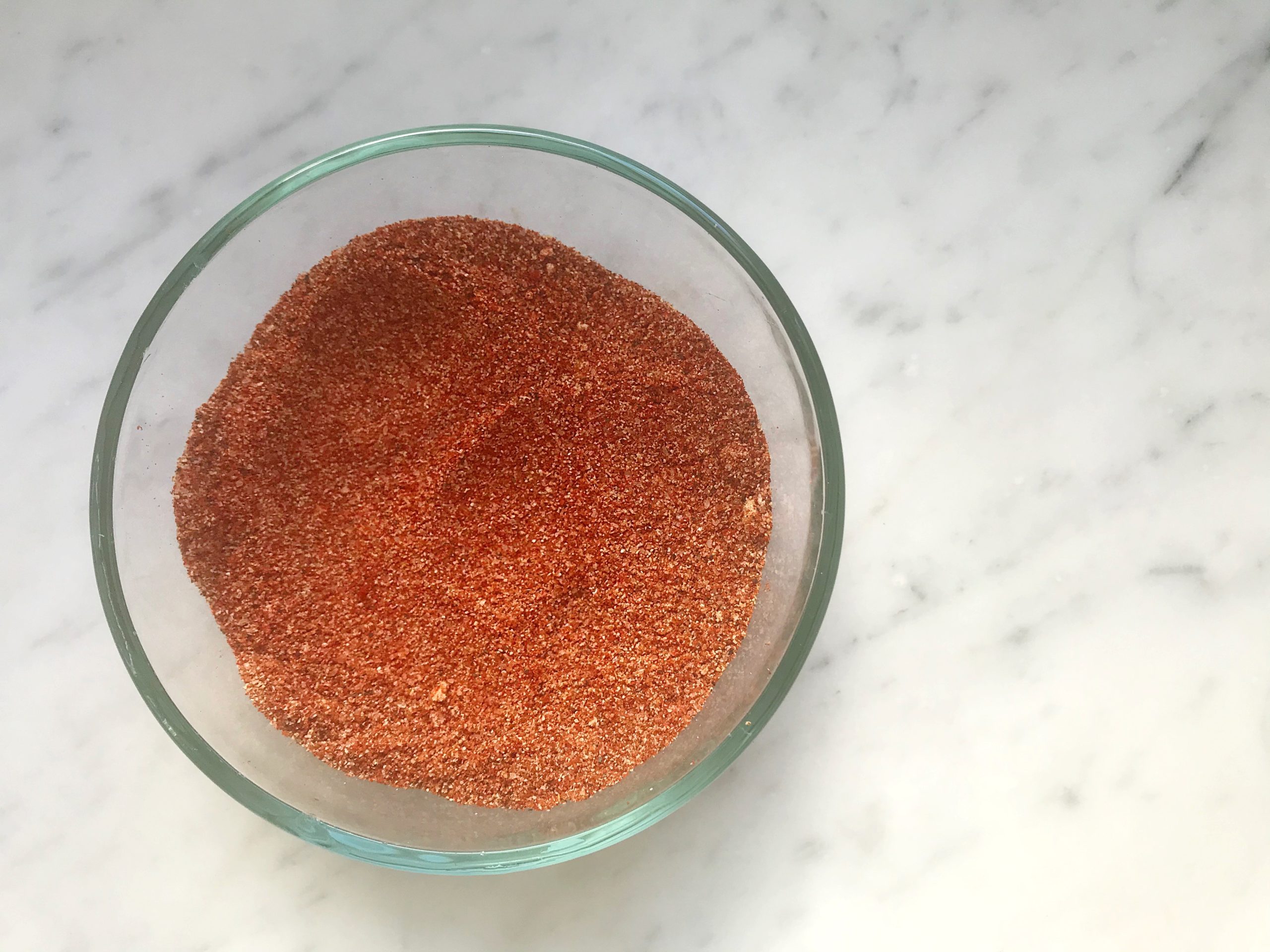One of the foods we most missed when implementing diet changes was a barbeque; this was primarily for my husband. Most barbeque sauces are loaded with MSG, natural flavors, smoke-flavor, soy, and several sources of free glutamate, and while I am sure a homemade barbeque sauce can be made, I have yet to attempt it myself. By using this simple rib rub, we can achieve the barbeque flavor, without the unwanted additives.
Ingredients
1 tbsp. Himalayan or sea salt
1 tbsp. paprika
1 tbsp. garlic granules
1 tbsp. onion granules
1 tbsp. chili powder
2 tsp. ground cumin
2 tsp. ground pepper
1/2 tsp. cayenne pepper
Instructions
In a small bowl, combine all ingredients and stir. Store in an air-tight container and use as needed.
Applying the rub:
- Using a large jellyroll plan, remove ribs from packaging, place the meatier side facedown, and remove the thick membrane from the bone side of ribs.
- Generously dust ribs with rib rub seasoning.
- Use hands to rub the seasoning into both sides of the rib slab
- Place seasoned ribs, meat side up on the jelly roll pan. We like to cover our ribs with parchment paper to keep some of the moisture in, but this is not necessary.
- Place ribs in a pre-heated oven at 300 degrees for about 2 1/2 hours
Tidbits
Through Dr. Reid, we’ve discovered that the FDA code of regulations has specific requirements for the “spice” or “spices” label. Using the term “spices” allows manufacturers to protect their proprietary blends without revealing trade secrets. The use of this term also allows for free glutamate to be hidden in products. Not all spice manufacturing processes are created equal. For example, powdered foods and additives often contain additional stabilizing, sulfating, and/or anticaking substances, and all of these can be called “spices” on an ingredient label. Free glutamate is very often a result of many of these manufacturing processes. We have reacted to foods containing “spice”, so we only purchase foods where the ingredients are specifically called out. For example, organic basil, organic oregano, etc.
The same is true for the term ‘powder’. Like, “spices”, often fillers and anti-caking agents are allowed as an ingredient but not required to be labeled under that term. The powder process also sometimes involves high pressure, heat, or hydrolysis conditions that can create free glutamate in the process. We specifically, look for the term ‘ground’ or ‘granules’ for a safer and cleaner option. Fresh herbs/spices are always the safest and most potent for therapeutic properties. Do not forget to read ingredients on spice blends for hidden sources of MSG.
The Spicely brand is by far my favorite!! We love Spicely because they are organic, gluten-free, no peanuts, no soybeans, no milk, no eggs, no fish, no sugar, no truants, no artificial color, no preservatives, no artificial sweeteners, no citric acid, no corn starch, no potato flour, no salt, no hydrogenated oil, no fillers and less risk with “powders”. Their products are produced only from whole herbs and spices. We can source them at our local Whole Foods and I have linked them above.

